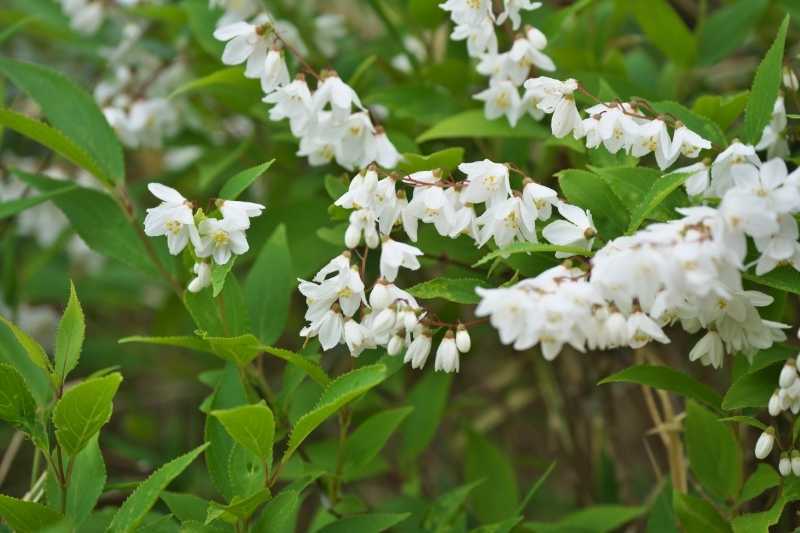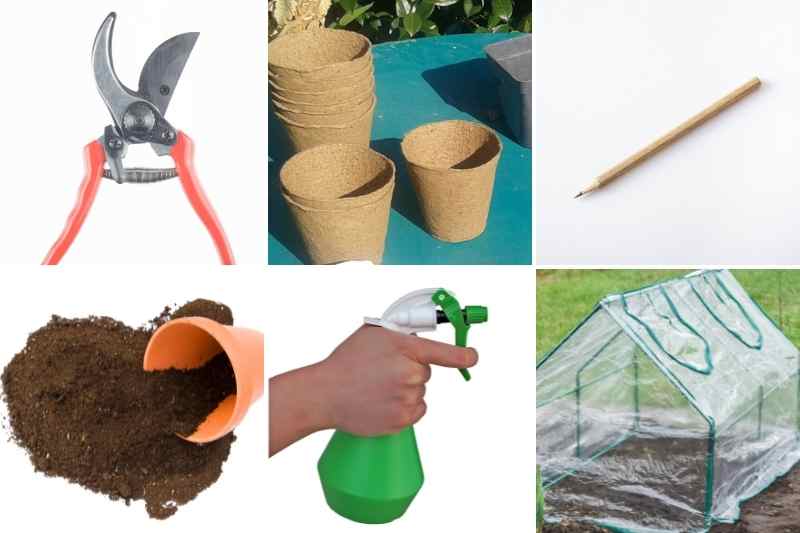Deutzia is a handsome deciduous bush, much appreciated for its spring flowering with very romantic shades, giving it the appearance of a very delicate cloud. Very hardy and rarely affected by disease, it belongs to those almost indestructible bushes that are very easy to grow. Undemanding, it grows in any good garden soil that stays cool in summer, like Deutzia gracilis, Deutzia scabra, or Deutzia x magnifica. Enough to make one want to multiply it to bring a refined and luminous floral touch to every corner of the garden! Multiplication is easily achieved by propagation by cuttings of the shoots.
Discover our tips and techniques to propagate Deutzia easily with our tutorial.

Deutzia gracilis
When to propagate Deutzia?
Propagation by cuttings of Deutzia can be done at either of two times:
- in spring, in May–June (these are called herbaceous cuttings),
- in late summer, in August–September (these are called semi-ripe or semi-lignified cuttings, that is when shoots begin to harden into wood).
Note: all varieties of Deutzia can be propagated by cuttings.
Equipment needed for propagating Deutzia
- a knife or a pruning shear that is sharp, disinfected beforehand with 70% alcohol to avoid risk of disease transmission
- pots, a tray or biodegradable buckets
- a seed or cutting compost or a mix of garden soil, turf and river sand
- a pencil
- a spray bottle
- a mini-greenhouse or a plastic bag

How to take a Deutzia cutting in spring?
- Using pruning shear, take shoots of Deutzia that are still green, healthy and vigorous, 10–25 cm long. Prefer shoots that have never flowered; they will produce more roots.
- Cut just below a leaf or below an eye
- Remove all leaves from lower half of cutting so none remain on part that will be buried and keep only one or two pairs of upper leaves.
- Cut remaining leaves in half to limit evaporation and excessive fatigue of the cutting
- Fill pots or tray with seed compost or the "home" mix
- Moisten compost well with spray bottle
- Use pencil to make one or more holes in compost to insert cuttings
- Plant stems by inserting three-quarters of their length into pots or tray
- Firm compost around cuttings with hands
- Water with spray bottle
- Place cuttings under plastic bag or in a mini-greenhouse
- Keep compost cool and slightly moist, but not waterlogged
- Keep them sheltered until rooting, in a bright place but out of direct sunlight
- Ventilate every 3–4 days to prevent development of mould
- When cuttings show signs of growth, repot into larger pots
- Keep medium slightly moist
How to take a Deutzia cutting in late summer?
- After flowering, with pruning shear, take semi-woody or semi-ripe shoots, i.e. in the hardening phase, 15–20 cm long, avoiding, if possible, shoots that have flowered
- Cut 1 cm below a bud
- Prepare pots or buckets filled with a mix of turf and river sand in equal parts or a good seed compost
- Moisten this light, free-draining medium well with spray bottle
- Remove leaves from lower part of shoots
- Cut remaining leaves in half
- Insert each cutting into medium to two-thirds of its length, leaving only the top bud protruding
- Firm gently with fingers around stems
- Lightly mist cuttings with spray bottle
- You can carry out closed cutting (covered method), also very easy in late summer. It keeps medium sufficiently moist and creates a warm atmosphere favourable to root development: simply cover cuttings with plastic bag or place them in a mini-greenhouse. Medium must never dry out.
- Ventilate and water occasionally
What to do after taking a Deutzia cutting?
When cuttings show signs of growth, remove plastic or mini-greenhouse. Keep cuttings until autumn in a bright place. Plant in ground if root development is sufficient, otherwise wait until following spring. Repot into larger pots and, in that case, protect cuttings during first winter under a cold frame or in a conservatory, spacing out watering.
To find out more
- Discover our advice sheet: "Propagation by cuttings, everything you need to know about different techniques and our advice for successful cuttings"
- Find everything you need to know in our sheet on Deutzia
- Discover our varieties of Deutzia































![[plant id="123" name="Deutzia cutting"] making a cutting of deutzia](https://en.promessedefleurs.eu/blogwp/wp-content/uploads/2022/08/Bouturer-un-deutzia.jpg)
Comments